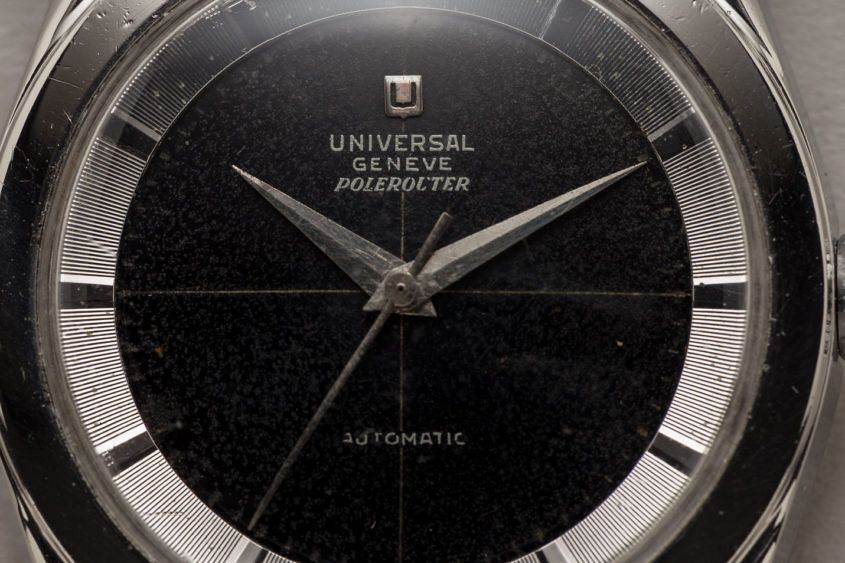 Some watches take the world by storm the moment they are released. Some, however, take a little while longer to be appreciated. The true significance of the Universal Genève Polerouter, first released in 1954, and its subsequent offshoots are still in the process of being properly recognised. Not only was it the first really significant design to exit the pen of Gérald Genta (who would go on to design the Audemars Piguet Royal Oak and the Patek Philippe Nautilus before overhauling Bulgari’s product offering and launching his own brand), it was a trailblazer upon its release. And still, to this day, the Polerouter is often cited as the inspiration for many modern watch designs. With so much going for it, it’s not hard to see why. The first thing that is likely to strike you about the Polerouter are those graceful bombé lugs that look like the slinkier, sexier cousin of the lugs you’d expect to find on an Omega Speedmaster (a watch that would not hit the shelves until the Universal Genève had been on the market for the best part of three years). What is less immediately apparent about those lugs, however, is the space between them. Although…
Some watches take the world by storm the moment they are released. Some, however, take a little while longer to be appreciated. The true significance of the Universal Genève Polerouter, first released in 1954, and its subsequent offshoots are still in the process of being properly recognised. Not only was it the first really significant design to exit the pen of Gérald Genta (who would go on to design the Audemars Piguet Royal Oak and the Patek Philippe Nautilus before overhauling Bulgari’s product offering and launching his own brand), it was a trailblazer upon its release. And still, to this day, the Polerouter is often cited as the inspiration for many modern watch designs. With so much going for it, it’s not hard to see why. The first thing that is likely to strike you about the Polerouter are those graceful bombé lugs that look like the slinkier, sexier cousin of the lugs you’d expect to find on an Omega Speedmaster (a watch that would not hit the shelves until the Universal Genève had been on the market for the best part of three years). What is less immediately apparent about those lugs, however, is the space between them. Although…
The post Why the Universal Genève Polerouter was the game-changing dial from the 1950s appeared first on Time and Tide Watches.

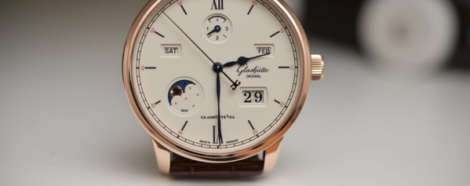
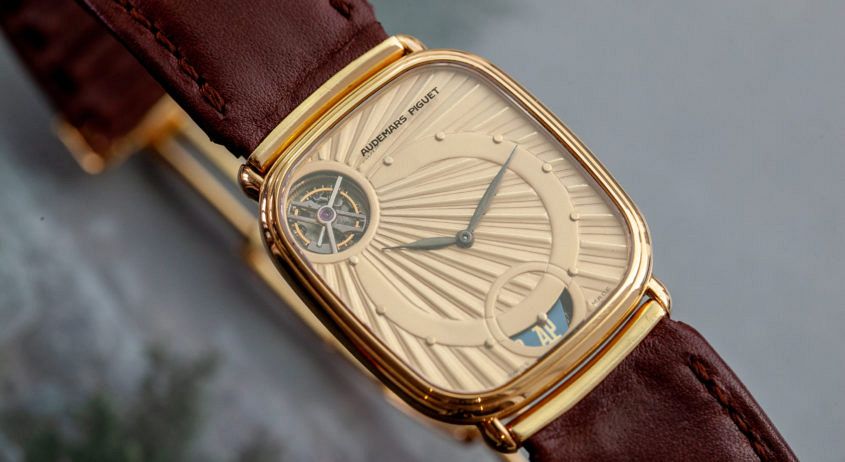 Of all the Swiss watch manufacturers, Audemars Piguet has had one of the longest and most storied histories since their founding in the Vallée de Joux in 1875. For their entire period of operation, Audemars Piguet has been a family-run watchmaker, affording them an independence from the commercial pressures of conglomerates and allowing the brand to concentrate on the past and the future, rather than the present. This attitude to prioritise their legacy before the results of the last quarter has seen Audemars Piguet pour resources into accurately recording their history as it occurs, resulting in an impressive archive of not only their own watches, but of watches made in the Vallée de Joux – many of which are on display in their museum. One of the key figures behind this scholarly approach to the history of Audemars Piguet is Michael Friedman, a historian who has been working for the watchmaker since 2012, previously working at the auction house Christie’s. He sat down with the folks at Blackbird Watch Manual to talk about why Gérald Genta’s successor was even more central to the history of Audemars Piguet, the history of the tourbillon, and why the firm is so good at producing…
Of all the Swiss watch manufacturers, Audemars Piguet has had one of the longest and most storied histories since their founding in the Vallée de Joux in 1875. For their entire period of operation, Audemars Piguet has been a family-run watchmaker, affording them an independence from the commercial pressures of conglomerates and allowing the brand to concentrate on the past and the future, rather than the present. This attitude to prioritise their legacy before the results of the last quarter has seen Audemars Piguet pour resources into accurately recording their history as it occurs, resulting in an impressive archive of not only their own watches, but of watches made in the Vallée de Joux – many of which are on display in their museum. One of the key figures behind this scholarly approach to the history of Audemars Piguet is Michael Friedman, a historian who has been working for the watchmaker since 2012, previously working at the auction house Christie’s. He sat down with the folks at Blackbird Watch Manual to talk about why Gérald Genta’s successor was even more central to the history of Audemars Piguet, the history of the tourbillon, and why the firm is so good at producing…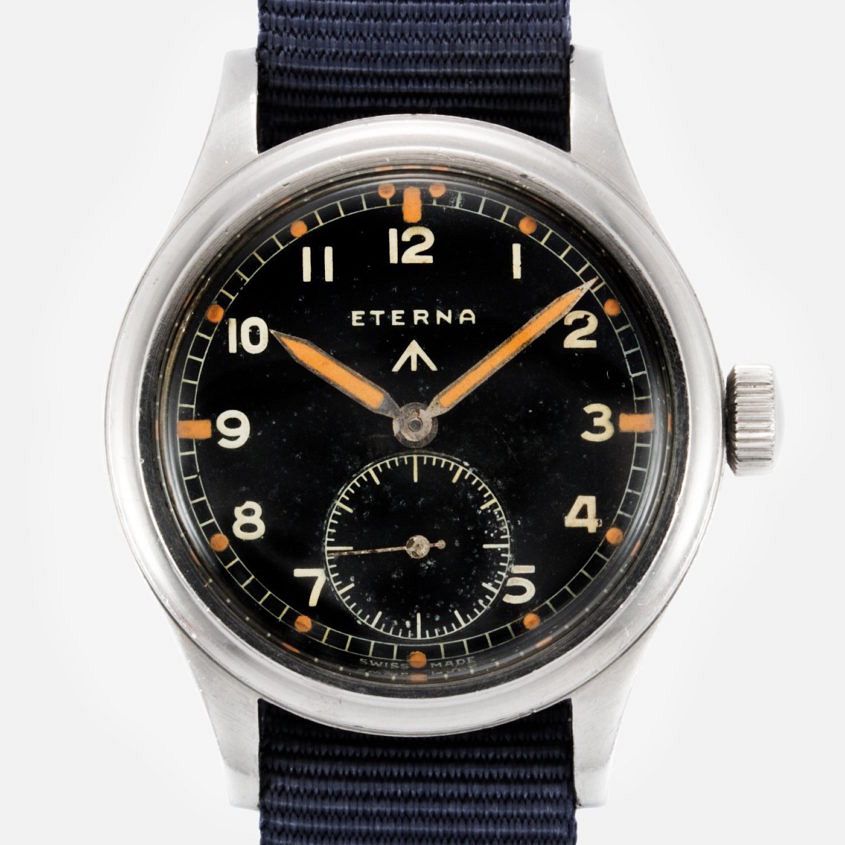 Editor’s note: Releases of reissued heritage field watches over the last few years have been a hugely successful avenue for a number of brands, thanks to the clean design language and no-nonsense layout of the watches. But what about the original examples of these important watches? Originally produced for the Allied armed forces during the Second World War, the colloquially known Dirty Dozen are the template for the barebones time-only watch of today. Let’s take another look at the brands that helped establish this iconic style but aren’t as lauded in the history books. The “Dirty Dozen” are watches produced by the 12 British Ministry of Defence contractors during World War II who were tasked with strapping watches to the wrists of Allied forces. While some of the brands are bigger and better than ever before, a few have slid into relative obscurity or the books of insolvency firms. I wanted to take a look at which of the Dirty Dozen survive today … Which of the Dirty Dozen survive today? During the Second World War, the MoD took the opinion that civilian watches weren’t up to the task of providing accurate timekeeping to their soldiers, and decided they needed…
Editor’s note: Releases of reissued heritage field watches over the last few years have been a hugely successful avenue for a number of brands, thanks to the clean design language and no-nonsense layout of the watches. But what about the original examples of these important watches? Originally produced for the Allied armed forces during the Second World War, the colloquially known Dirty Dozen are the template for the barebones time-only watch of today. Let’s take another look at the brands that helped establish this iconic style but aren’t as lauded in the history books. The “Dirty Dozen” are watches produced by the 12 British Ministry of Defence contractors during World War II who were tasked with strapping watches to the wrists of Allied forces. While some of the brands are bigger and better than ever before, a few have slid into relative obscurity or the books of insolvency firms. I wanted to take a look at which of the Dirty Dozen survive today … Which of the Dirty Dozen survive today? During the Second World War, the MoD took the opinion that civilian watches weren’t up to the task of providing accurate timekeeping to their soldiers, and decided they needed…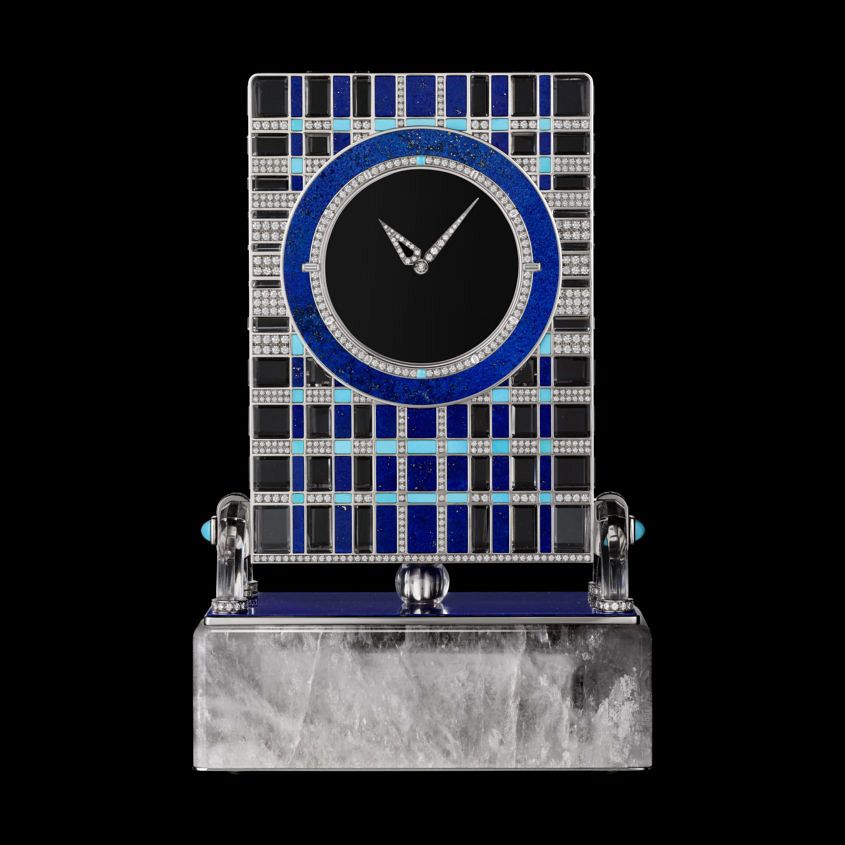 Louis Cartier has an important place in the history of the Cartier company, not only because he ran the first-ever Paris boutique but because he was responsible for one of the most enigmatic creations the brand released, the Cartier Mystery Clock. The origins of the Mystery Clock are found in 1912, when Louis Cartier began developing the playfully puzzling clocks with his watchmaker Maurice Coüet who, in turn, had studied the designs of the French magician Jean-Eugène Robert-Houdin (who inspired Ehrich Weiss to adopt the stage name Houdini). The result was one of Cartier’s most enduring designs, inspiring a sense of awe and curiosity in all those who laid eyes on the curious clocks, and demonstrating the blend of expertise in both watchmaking and decorative arts that Cartier is so well known for today. The tradition of the Cartier Mystery Clock is alive and well a century later, with modern examples still produced, though in very low numbers. Not long ago, the retailer The Hour Glass published a well-researched and written piece on the topic which you can read here.
Louis Cartier has an important place in the history of the Cartier company, not only because he ran the first-ever Paris boutique but because he was responsible for one of the most enigmatic creations the brand released, the Cartier Mystery Clock. The origins of the Mystery Clock are found in 1912, when Louis Cartier began developing the playfully puzzling clocks with his watchmaker Maurice Coüet who, in turn, had studied the designs of the French magician Jean-Eugène Robert-Houdin (who inspired Ehrich Weiss to adopt the stage name Houdini). The result was one of Cartier’s most enduring designs, inspiring a sense of awe and curiosity in all those who laid eyes on the curious clocks, and demonstrating the blend of expertise in both watchmaking and decorative arts that Cartier is so well known for today. The tradition of the Cartier Mystery Clock is alive and well a century later, with modern examples still produced, though in very low numbers. Not long ago, the retailer The Hour Glass published a well-researched and written piece on the topic which you can read here.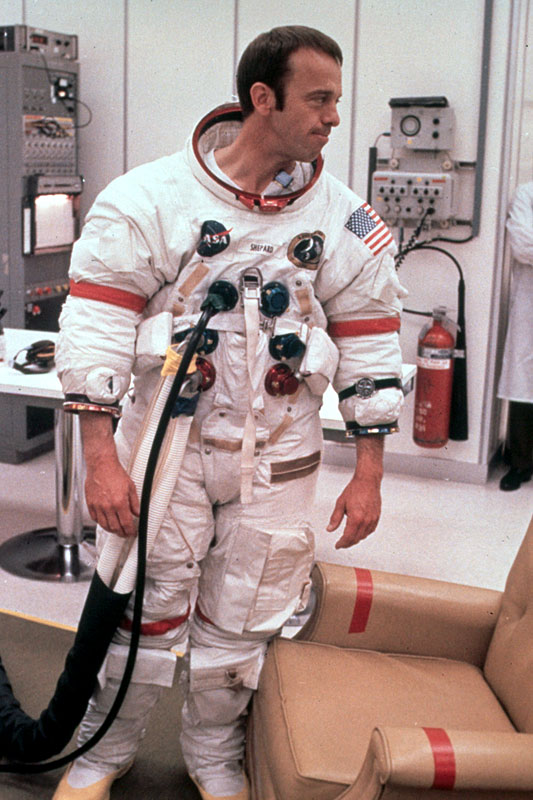 In many ways, outer space and space exploration have become a routine part of life. We all carry a device that listens to signals from space in the form of our mobile phone. Most can receive messages from GPS satellites in medium earth orbit more than 20,000km away. Just as space is now entwined with our lives, so is timekeeping inseparable from space. GPS relies upon clocks. A satellite sends a signal that says “I sent this at time X.” Your phone provides the time, Y, when the signal was received. The elapsed time between sending and receiving (Y minus X seconds) when combined with the known speed of the signal (Z km/s, from physics) reveals your distance from the satellite ( (Y-X)*Z). If your distance from three satellites is determined, your location can be trilateralated. The three distances are the diameter of three unique circles, each with a GPS satellite at its centre. Those three circles intersect at only one point and that point is your location. What is truly remarkable about timekeeping and outer space is that when astronauts are in this treacherous vacuum they typically employ a mechanical device to mark the time. No circuitry, no battery,…
In many ways, outer space and space exploration have become a routine part of life. We all carry a device that listens to signals from space in the form of our mobile phone. Most can receive messages from GPS satellites in medium earth orbit more than 20,000km away. Just as space is now entwined with our lives, so is timekeeping inseparable from space. GPS relies upon clocks. A satellite sends a signal that says “I sent this at time X.” Your phone provides the time, Y, when the signal was received. The elapsed time between sending and receiving (Y minus X seconds) when combined with the known speed of the signal (Z km/s, from physics) reveals your distance from the satellite ( (Y-X)*Z). If your distance from three satellites is determined, your location can be trilateralated. The three distances are the diameter of three unique circles, each with a GPS satellite at its centre. Those three circles intersect at only one point and that point is your location. What is truly remarkable about timekeeping and outer space is that when astronauts are in this treacherous vacuum they typically employ a mechanical device to mark the time. No circuitry, no battery,… Some watches take the world by storm the moment they are released. Some, however, take a little while longer to be appreciated. The true significance of the Universal Genève Polerouter, first released in 1954, and its subsequent offshoots are still in the process of being properly recognised. Not only was it the first really significant design to exit the pen of Gérald Genta (who would go on to design the Audemars Piguet Royal Oak and the Patek Philippe Nautilus before overhauling Bulgari’s product offering and launching his own brand), it was a trailblazer upon its release. And still, to this day, the Polerouter is often cited as the inspiration for many modern watch designs. With so much going for it, it’s not hard to see why. The first thing that is likely to strike you about the Polerouter are those graceful bombé lugs that look like the slinkier, sexier cousin of the lugs you’d expect to find on an Omega Speedmaster (a watch that would not hit the shelves until the Universal Genève had been on the market for the best part of three years). What is less immediately apparent about those lugs, however, is the space between them. Although…
Some watches take the world by storm the moment they are released. Some, however, take a little while longer to be appreciated. The true significance of the Universal Genève Polerouter, first released in 1954, and its subsequent offshoots are still in the process of being properly recognised. Not only was it the first really significant design to exit the pen of Gérald Genta (who would go on to design the Audemars Piguet Royal Oak and the Patek Philippe Nautilus before overhauling Bulgari’s product offering and launching his own brand), it was a trailblazer upon its release. And still, to this day, the Polerouter is often cited as the inspiration for many modern watch designs. With so much going for it, it’s not hard to see why. The first thing that is likely to strike you about the Polerouter are those graceful bombé lugs that look like the slinkier, sexier cousin of the lugs you’d expect to find on an Omega Speedmaster (a watch that would not hit the shelves until the Universal Genève had been on the market for the best part of three years). What is less immediately apparent about those lugs, however, is the space between them. Although…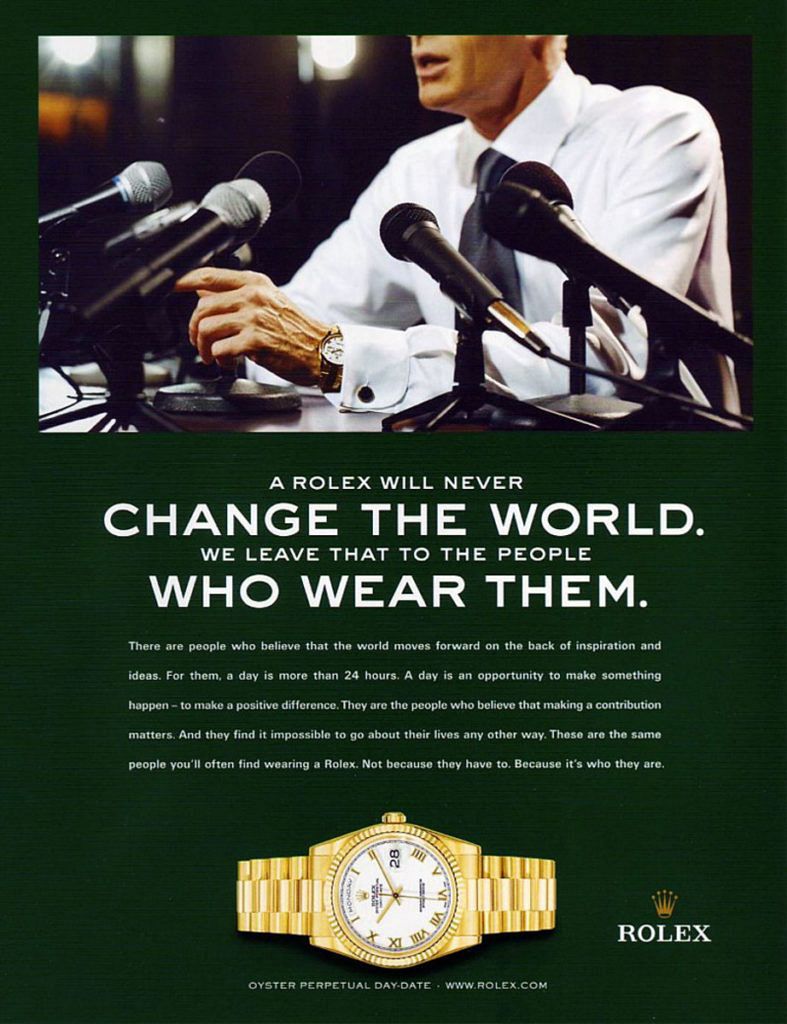 The importance of advertising in the world of luxury watchmaking can hardly be overstated. How a brand is perceived is everything. An effective campaign cannot just establish a model as a classic of the future, but position a brand so effectively that not even decades of half-hearted follow-ups or PR missteps seem capable of affecting its standing. Ambassadorships often go hand-in-hand with advertisements – a trend arguably started by Hans Wilsdorf’s decision to strap a Rolex Oyster to Channel swimmer Mercedes Gleitze and then featuring her image in the write-up of her endeavours. But that is ancient history. Let’s focus instead on the five best watch ads from the last 50 years. Rolex We’ll get this one out of the way early. You can’t ignore the power of The Crown, and so omitting it from a list of this nature would be for nothing but effect. Credit where credit is due, no brand has the visibility of Rolex, and that position has been helped by astute, if somewhat conservative campaigns, throughout its history. Here we see the classic Day-Date model pitched as the watch of presidents. You don’t get much better than that. Patek Philippe If you’ve not seen Patek…
The importance of advertising in the world of luxury watchmaking can hardly be overstated. How a brand is perceived is everything. An effective campaign cannot just establish a model as a classic of the future, but position a brand so effectively that not even decades of half-hearted follow-ups or PR missteps seem capable of affecting its standing. Ambassadorships often go hand-in-hand with advertisements – a trend arguably started by Hans Wilsdorf’s decision to strap a Rolex Oyster to Channel swimmer Mercedes Gleitze and then featuring her image in the write-up of her endeavours. But that is ancient history. Let’s focus instead on the five best watch ads from the last 50 years. Rolex We’ll get this one out of the way early. You can’t ignore the power of The Crown, and so omitting it from a list of this nature would be for nothing but effect. Credit where credit is due, no brand has the visibility of Rolex, and that position has been helped by astute, if somewhat conservative campaigns, throughout its history. Here we see the classic Day-Date model pitched as the watch of presidents. You don’t get much better than that. Patek Philippe If you’ve not seen Patek…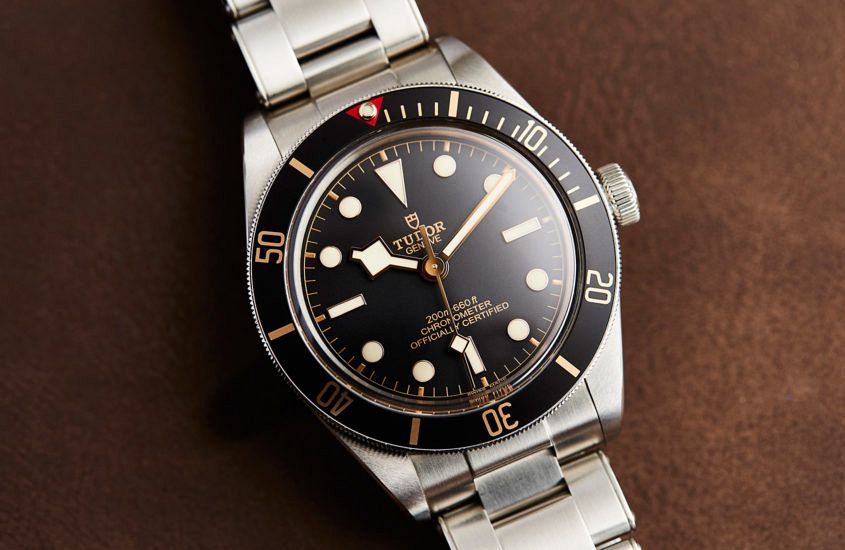 In 2009, Rolex performed a miracle. Necromancy. A resurrection. Back from the dead was the oft-maligned sister brand of the Crown: Tudor watches. What followed in the seven years since was the most startling and effective rebrand the world of watches has ever seen. And thanks to an immense financial investment and influential vocal advocacy, underpinned by an excellent product, it looks likely Tudor’s star will continue to burn brighter still over the years to come. Watch collecting is not what it was. How could it be? Until 30 years ago the notion of “collecting” watches was as odd a pastime as collecting spanners – objects designed to be used, not fawned over. Now, everyone is looking for “the next big thing”, the double-red Submariner at a garage sale, the box-fresh Rolex Explorer II original stuffed in the back of your grandfather’s sock drawer. The problem is, it isn’t going to happen as often as it did, because we are, as a group of informed collectors, simply too aware to allow the collectibility of modern pieces to ever reach that of their forebears. Why? Because watches never used to be collectible. Sought-after models are sought after because they are scarce.…
In 2009, Rolex performed a miracle. Necromancy. A resurrection. Back from the dead was the oft-maligned sister brand of the Crown: Tudor watches. What followed in the seven years since was the most startling and effective rebrand the world of watches has ever seen. And thanks to an immense financial investment and influential vocal advocacy, underpinned by an excellent product, it looks likely Tudor’s star will continue to burn brighter still over the years to come. Watch collecting is not what it was. How could it be? Until 30 years ago the notion of “collecting” watches was as odd a pastime as collecting spanners – objects designed to be used, not fawned over. Now, everyone is looking for “the next big thing”, the double-red Submariner at a garage sale, the box-fresh Rolex Explorer II original stuffed in the back of your grandfather’s sock drawer. The problem is, it isn’t going to happen as often as it did, because we are, as a group of informed collectors, simply too aware to allow the collectibility of modern pieces to ever reach that of their forebears. Why? Because watches never used to be collectible. Sought-after models are sought after because they are scarce.…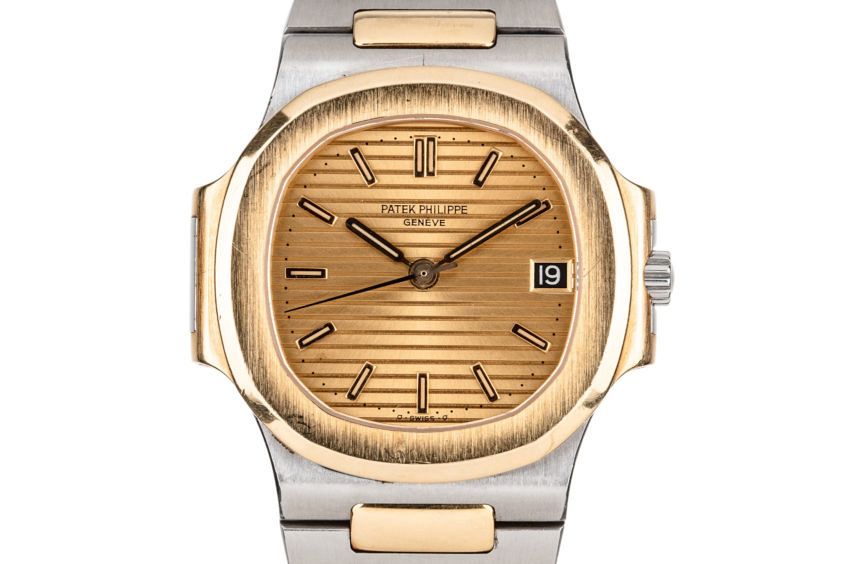 The Patek Philippe Nautilus forms the basis of this historic brand’s sports collection, which rivals the very best in the business. And the genesis of this iconic model shares its history with another legendary sports watch, further cementing the status of the man behind both pieces. Designed by Gérald Genta, the Audemars Piguet Royal Oak hit the market four years before he followed up with the Nautilus, which debuted in 1976. Being responsible for two of the industry’s most recognisable references firmly established Genta’s reputation as the father of luxury sports watches. And while we’ve had the best part of half a century to become well acquainted with the Patek Philippe Nautilus, this storied timepiece still has a few lesser-known facts up its sleeve. The original Nautilus had more in common with the Audemars Piguet Royal Oak than just the same designer In the ’70s, the concept of a luxury sports watch was in its infancy. And, in those days, many major brands were still in the habit of fitting their new models with movements designed by rivals brands. Case in point, both the Nautilus and the Royal Oak were originally driven by the same super-slim automatic calibre from Jaeger-LeCoultre,…
The Patek Philippe Nautilus forms the basis of this historic brand’s sports collection, which rivals the very best in the business. And the genesis of this iconic model shares its history with another legendary sports watch, further cementing the status of the man behind both pieces. Designed by Gérald Genta, the Audemars Piguet Royal Oak hit the market four years before he followed up with the Nautilus, which debuted in 1976. Being responsible for two of the industry’s most recognisable references firmly established Genta’s reputation as the father of luxury sports watches. And while we’ve had the best part of half a century to become well acquainted with the Patek Philippe Nautilus, this storied timepiece still has a few lesser-known facts up its sleeve. The original Nautilus had more in common with the Audemars Piguet Royal Oak than just the same designer In the ’70s, the concept of a luxury sports watch was in its infancy. And, in those days, many major brands were still in the habit of fitting their new models with movements designed by rivals brands. Case in point, both the Nautilus and the Royal Oak were originally driven by the same super-slim automatic calibre from Jaeger-LeCoultre,…